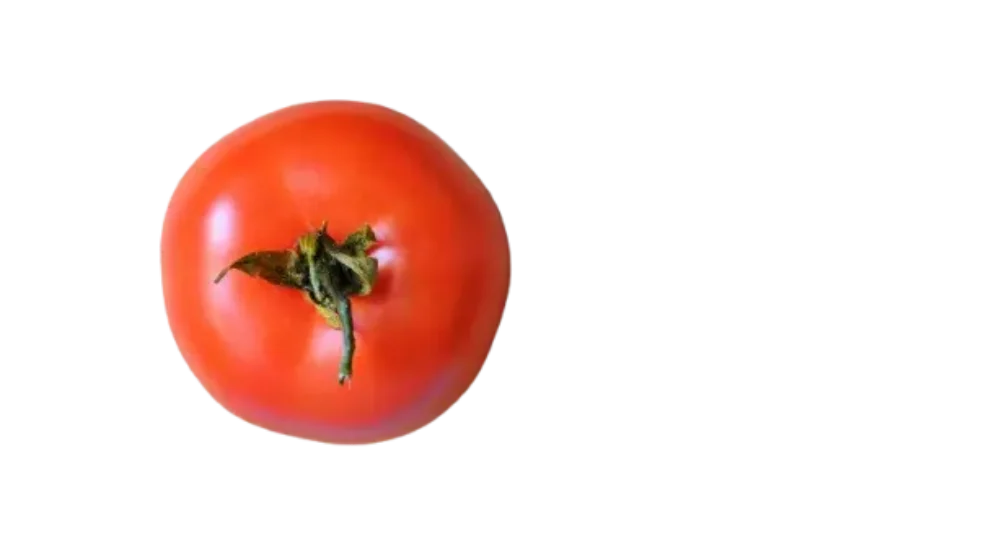Tomato (Solanum lycopersicum) is a widely cultivated fruit that is often treated as a vegetable in culinary applications. Originating from South America, tomatoes were domesticated and spread worldwide through Spanish exploration. Today, they are a staple ingredient in global cuisines, used in salads, sauces, soups, and juices.
Tomato (Solanum lycopersicum) – A Comprehensive Guide
Packed with vitamins, antioxidants, and essential minerals, tomatoes are recognized for their heart health benefits, digestive support, and immune-boosting properties. This guide explores its history, nutritional profile, health benefits, medicinal uses, cultivation, and recipes.
Historical Significance & Cultural Importance
Tomatoes have played a significant role in traditional medicine, agriculture, and culinary traditions across various civilizations.
Tomato in Ancient Traditions
- Mesoamerican Origins: First cultivated by the Aztecs and Incas, later introduced to Europe by Spanish explorers.
- European Renaissance: Initially considered poisonous, later embraced in Italian and Mediterranean cuisine.
- American Agriculture: Became a staple crop in the United States, leading to large-scale commercial production.
- Global Culinary Influence: Used in pasta sauces, curries, salads, and beverages worldwide.
Botanical Description
Tomatoes belong to the Solanaceae family and are classified under the Solanum genus.
Plant Characteristics
- Growth: Herbaceous vine, reaching 1–3 meters in height.
- Leaves: Compound, dark green, with a slightly hairy texture.
- Flowers: Yellow, five-petaled, self-pollinating.
- Fruit: Round or oblong, red, yellow, green, or purple, with juicy flesh and edible seeds.
Cultivation & Growing Conditions
Tomatoes thrive in warm, sunny climates and require well-drained soil.
- Ideal Temperature: 20–30°C for optimal growth.
- Soil Type: Loamy, slightly acidic soil with good drainage.
- Propagation: Grown from seeds or cuttings.
- Harvesting Season: Summer and autumn, depending on the variety.
Nutritional Profile of Tomato
Tomatoes are rich in essential nutrients, making them a superfood for overall health.
Nutrients in Tomato (Per 100g Serving)
| Nutrient | Amount | Health Benefits |
|---|---|---|
| Vitamin C | 13.7mg | Boosts immunity & skin health |
| Lycopene | High | Powerful antioxidant for heart health |
| Fiber | 1.2g | Supports digestion & gut health |
| Potassium | 237mg | Regulates blood pressure |
| Calcium | 10mg | Strengthens bones & teeth |
| Magnesium | 11mg | Supports muscle & nerve function |
Health Benefits of Tomato
1. Supports Heart Health & Cholesterol Control
- Reduces LDL (bad cholesterol) and boosts HDL (good cholesterol).
- Improves blood circulation, preventing heart disease.
- Lowers blood pressure, reducing hypertension risk.
2. Boosts Immunity & Fights Infections
- Rich in Vitamin C, strengthening immune defenses.
- Antioxidants neutralize free radicals, preventing cell damage.
- Protects against seasonal illnesses, including cold and flu.
3. Enhances Skin Health & Anti-Aging
- Lycopene improves skin glow, reducing dark spots and wrinkles.
- Vitamin C boosts collagen production, improving skin elasticity.
- Hydrates and nourishes, preventing dryness and dullness.
4. Supports Digestion & Gut Health
- High fiber content aids digestion and prevents constipation.
- Balances gut bacteria, reducing bloating and acidity.
- Stimulates gastric juices, improving nutrient absorption.
5. Aids in Weight Loss & Metabolism
- Boosts metabolism, helping burn fat faster.
- Suppresses appetite, reducing cravings.
- Detoxifies the body, eliminating toxins that slow weight loss.
6. Helps Manage Diabetes Naturally
- Regulates blood sugar levels, preventing spikes.
- Improves insulin sensitivity, reducing diabetes risk.
- Contains polyphenols, which protect pancreatic cells.
7. Supports Brain Health & Cognitive Function
- Enhances memory and focus, reducing brain fog.
- Protects against neurodegenerative diseases like Alzheimer’s.
- Reduces stress and anxiety, promoting mental clarity.
Medicinal Uses of Tomato
1. Tomato Juice for Immunity & Detox
- Recipe: Blend 2 fresh tomatoes, strain, and add honey for taste. Drink daily for immune support.
2. Tomato Peel Powder for Digestion & Skin Health
- Usage: Dry and grind tomato peels, mix ½ tsp powder with warm water. Drink before meals for gut health.
3. Tomato Leaf Extract for Blood Sugar Control
- Usage: Boil tomato leaves, strain, and drink as tea to regulate digestion and improve gut health.
4. Tomato Vinegar for Heart Health
- Recipe: Ferment tomato juice with apple cider vinegar for a cholesterol-lowering tonic.
How to Include Tomato in Your Diet
- Raw Tomato – Eat fresh for maximum benefits.
- Tomato Juice – Drink daily for detoxification.
- Tomato Zest – Sprinkle on salads or yogurt.
- Tomato Leaf Tea – Brew dried leaves for a healthy drink.
- Tomato Smoothies – Blend with banana and coconut water.
Side Effects & Precautions
While tomato is generally safe, excessive consumption may cause:
- Acidity due to high citric acid content.
- Allergic reactions in sensitive individuals.
- Blood sugar fluctuations in diabetics.
Conclusion
Tomato (Solanum lycopersicum) is truly a superfruit, offering unmatched health benefits for digestion, immunity, skin health, heart function, brain health, and weight management. Whether consumed raw, as juice, powder, or tea, it remains a powerful natural remedy for overall wellness.
Start incorporating tomatoes into your daily routine and experience their incredible benefits.




